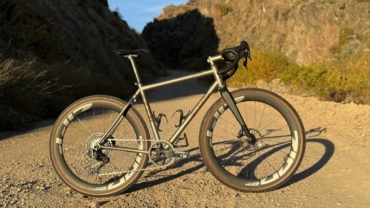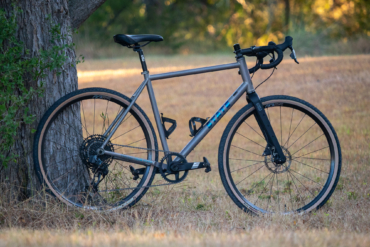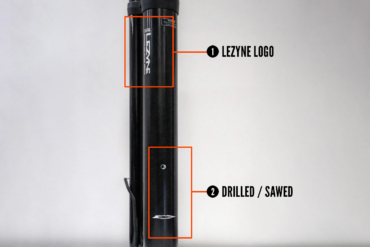Use this handy guide, and we’ll help you get the best bike your money can buy.
Whatever your reason for buying a used bike — low inventory on new bikes, saving a few bucks, or whatever — you have to know the pros and cons of going that route.
Take a look at our guide on how to prepare, find, buy, and love the bike of your dreams!
GearJunkie Guide: How to Buy a Used Bike
Know the Style of Bike You Want
Rule one is simple and straightforward. Will you ride road, gravel, cross-country, all-mountain, enduro, e-bike, commuter, or townie? Where you shop and what you’re looking for depends on how you’ll ride.
If you’re trail-focused but also want to do some dirt road touring, a cross-country (XC) mountain bike may be your best option. Conversely, if some dirt road riding is your jam but you also want a bike you can commute on, consider a gravel bike.
If you’ve been avoiding bike commuting because grinding up a big hill at the end of your workday seems overwhelming, consider an e-bike. This battery-backed bike will support your pedaling with a motorized boost when you need it, enough so that you might also consider picking up groceries for dinner on the way home, too.
Most styles of bikes also come with a pedal-assist option, though there are fewer on the market in the U.S. than pedal bikes.
What’s Your Bike Size?
Before you start shopping, figure out your size. Check manufacturers’ websites or take measurements from the bike you have. Most brands have an online guide where you can look up your height and inseam to find out what size you need.
For example, if you have a particularly short torso/long legs (or long torso/short legs), you’ll have to put a little more work in to determine what you need. You can modify a bike’s size somewhat by altering the seat post height and changing the stem.
Most road frames are sized in centimeters. I am 5’7” with a 32” inseam, and I ride a 52 cm or a 54 cm. But know that road bike sizing is less forgiving than sizing for other bikes. Many have proprietary seat posts and/or stems that can limit adjustability.
Meanwhile, most mountain and gravel bikes have a lot of adjustability. They often range in size from XS to XL, though older mountain bikes might be sized in inches. Most brands have good size charts on their websites to help you determine which size you should ride — or at least get you in the ballpark before a test ride.

Know What You’re Looking At — Or Find Someone Who Does
Can you identify a worn drivetrain, or spot a concerning ripple in a carbon fiber frame? If yes, you have a better chance of making sure the bike you want is worth buying.
But, if not — particularly if you’re buying a high-end mountain, road, or gravel bike — consider shopping from a local shop, like Stowe, Vermont’s Ranch Camp, that gives a bike a once-over before it puts it on consignment, or at a site like Pro’s Closet, which does a 141-point inspection on every bike before it goes on sale.
If you can test a bike, even with a parking lot ride, you can make the PayPal transfer to buy it more confidently. Listen for creaks, inspect the suspension, make sure it fits.
“The challenge for buying off Pinkbike is you have no recourse if you get something you didn’t expect to receive,” said Ranch Camp Bike Shop manager, Mar Kuhnel.
Here are some key problem areas to watch out for.
Creaks, Cracks, Leaks, Etc.
Wrinkles in the paint, frayed carbon fibers, and visible dents are all red flags that the bike you’re considering might have a compromised frame. So if you buy the bike, it would not be under warranty. Most bike warranties cover the original purchaser only.
If you see oil leaking out of the fork or shock, that’s another indicator that the bike might need expensive service or new parts before it’s rideable. Visible damage in the rear cassette or front chainrings, including broken teeth, can also indicate that parts and repairs are needed.
Creaking or grinding are indicators that you should have a mechanic check out the bike before you buy it. Creaking could be as simple as a saddle that needs tightening, or a loose bottom bracket. Or it could be something more serious and costly.
Keep Your Communications on Platform
If you’re buying through an online platform like Facebook Marketplace or Pinkbike, beware of scammers. Pay by PayPal Goods, even though you’ll pay extra to cover fees. If a seller tells you they prefer bank transfer or PayPal gift, be wary.
Keep an Eye Out for Value-Added Customization
The gems, according to Pros Closet chief revenue officer Travis Erwin, are bikes that have been customized.
“If we just take the algorithm of the make, model, and year, we won’t necessarily see the key features that make a particular bike valuable,” Erwin said.
“People who love their bikes often upgrade, so we may see a $2,500 bike upgraded with a $3,000 wheelset, which has a lot more value than a stock build. Used bikes are all snowflakes in a way; when you’re shopping for used, you can come across unique builds. It’s like buying art in a way.”

Get Pics
If you’re buying online, get as many close-up photos of the bike as you can, and a couple of shots that show the whole bike. If you’re picking the bike up in person, bring a mechanic or make arrangements to take the bike to a mechanic before you pay.
Ask for Service Records
Kuhnel advises asking a seller for service records. “If someone has cared for their bike, they may have records of shock maintenance, or tune-ups. Buying a bike from someone who has cared for their bike might be a better bet,” she said.
Not everyone shells out for preventative maintenance on their bike. If they haven’t, you may spend anywhere from $50 to hundreds getting your new-to-you bike in good riding shape.
“A shock oil service on a mountain bike can make an old bike feel new,” Kuhnel noted. “You want to make sure you’re getting what the seller advertised and that you won’t be saddled with a costly problem.”
No used bike will carry the manufacturer’s warranty, even if it’s a relatively newer pre-owned bike.
Educate Yourself: What’s Replaceable, What’s Repairable, and What’s Not?
New grips or bar tape cost $20. New cables and a new cassette are also relatively affordable. And you can upgrade drivetrain components, if you like. Plus, on town or commuter bikes, you may need a new chain or brake pads. But derailleurs are expensive, and frame damage may be fixable or not.
If you’re buying a bike that you know needs a fix, check that you can get parts. There is a worldwide shortage of bike parts this year that will likely continue through 2022.
When you’ve found the bike you want, ask the seller for the serial number and check it at BikeRegister.com to make sure it’s not stolen.
If you find a deal that’s too good to be true, there’s a good chance it’s too good to be true.

Get Bicycle Insurance
If you buy a bike that’s being shipped to you, pay for insurance for the value of the bike. It’s a bummer when a new-to-you bike arrives damaged because it was poorly packaged or mishandled in shipping.
Check with your auto insurance policyholder, if you have one, as many will offer additional coverage for bicycles.
When to Walk Away
If a bike’s serial number is altered or removed, it could be a stolen bike.
Don’t buy a bike that’s stickered unless you’re able to remove the stickers and look underneath.
If the bike is vinyl wrapped or the paint isn’t from the manufacturer, be suspicious that the seller may be hiding something.
Used Mountain and Gravel Bikes
Erwin says that if you’re looking for a used mountain bike, buy one 3 years old or less because the technology has advanced so much. Unless you’re looking for a collector’s item.
Kuhnel agrees, sort of. “In the last year or two, bikes are riding better and better thanks to more progressive geometry and better and better kinematics. But if you’re on a bike that’s 10 years old, a 6-year-old bike will feel amazing if it’s been loved, cared for, and in good shape.”
What to Look For
When you’re shopping for a used mountain bike, check areas that may have hidden damage, like the bottom brackets and chainstays. Chain suck can sometimes cause carbon damage on the chainstays, and bottom brackets can get bashed on rocks.
Check the headtube for any signs of impact, which could also warn of catastrophic failure in the future. Also, check the rims for flat spots.
Examine a mountain bike’s stanchions, the metal tube that compresses and disappears into the fork as you ride. Note any scratches, dings, or other damage.
Also, inspect the shaft of the shock. Scratches or dings in either can compromise shock and fork seals, which then may not keep dirt out. That can ultimately hamper the fork or shock’s function.
And if you see oil leaking from shock or fork seals, have a mechanic diagnose the problem before you hit send on Venmo.
For gravel bikes, check for the same. Gravel roads can kick up rocks and damage frames, and gravel bikes don’t always have the impact resistance of mountain bikes. So, check these frames thoroughly.
And if you need more photos to be sure you’re getting what you want, ask.
Follow Up at Your Local Bike Shop
Once you receive your new bike, get help from your local shop or a brand’s online shock calculator to get your suspension set up. Suspension that’s been set to your rider weight, along with appropriate tire pressure, will make all the difference in how your new bike feels.

Used Road and City Bikes
If you’re buying something other than a mountain bike, it may be easier to see any potential issues. Both Erwin and Kuhnel say the main issues are mostly drivetrain. So if you can have a mechanic look for chain wear or cassette wear, give the frame a quick check, and make sure the brakes work well, you should be in good shape.
Remember: midrange bikes are a lot cheaper to fix than high-end ones. However, be aware that you can’t fully check or feel a bike if the seller is in another state. So before you buy a classic bike, make sure you can get compatible parts if you need them.
And if you just want to know about the new bikes we recommend, check out our related guides: Best Mountain Bikes, Best Gravel Bikes, Best Fat Tire Bikes, Best Commuter Bikes, and Best Electric Cargo Bikes.







